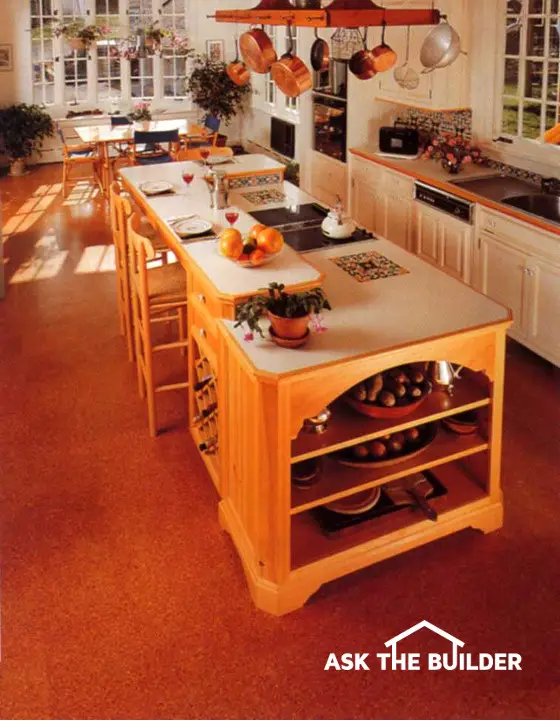Why Cork Flooring

Cork Flooring
DEAR TIM: I was beginning to shop for wood flooring the other day. A visit to a local wood flooring dealer left me perplexed. The salesperson showed me samples of cork flooring. At first, I thought he was joking. Isn't it too soft to use for flooring? Is it really a suitable flooring for heavy traffic areas? A.B.
DEAR A. B.: You should consider yourself extremely fortunate. Should you decide to select it for your home, you will not be disappointed. Cork flooring is one of the most interesting wood floor products that I know of.
If you are an environmentalist, you will love cork flooring. The cork which is used to produce the flooring is harvested from the bark of the cork oak tree. These trees grow primarily in Portugal, Spain, and Tunisia. The cork is harvested approximately every nine years. Amazingly, the cork bark grows back with no harm whatsoever to the tree!
Cork is probably the ultimate resilient flooring. It has excellent shock absorbing and sound deadening properties because of its unique cellular structure. Fifty percent of the volume of the material is comprised of air! These small pockets of air act as natural shock absorbers. Thus, walking or standing on the floor produces little fatigue. Cork also has the ability to absorb sound waves. Rooms with cork flooring are unusually quiet.
Because of its lack of grain, cork flooring offers a unique look. Cork flooring is made by grinding up the bark into small pieces. These pieces are then coated with a non-toxic resin binder. The flooring is produce in sheets of different thickness and often cut into precision 12 inch by 12 inch pieces. When installed, the floor has a very attractive smooth 'pebbled' appearance.
Cork flooring is available in different colors. However, you won't believe how the cork is colored. The cork is placed in ovens and baked. The longer it remains in the ovens, the darker it becomes.It is available in a wide range of colors. The cork can be installed natural (a light tannish brown) or you can request a deep brown similar to dark walnut.
Author's Note: If you want a cork floor of your own and want to see how easy it is to install, you should consider buying my Cork Flooring eBook. It has wonderful step-by-step color photos and easy to follow directions. I guarantee your satisfaction!
Adhesives are used to install cork flooring. The material is also easily cut with a razor knife. Cork flooring can be purchased prefinished, however, finishing the material on site makes for a virtually seamless floor. The best results are achieved by performing a light sanding before applying urethane. Due to its porosity, the cork may require 4 - 5 coats of urethane. Urethane coated cork is extremely durable. Remember, when you walk on a finished floor you wear away the finish, not the flooring.
Your concerns about cork's softness are legitimate. There are some simple precautions you must take with cork flooring. Because it is resilient, heavy furniture can permanently dent it. It is suggested that you use high quality furniture pads beneath table or furniture legs. Also, as with any wood floor, water, in excessive amounts can damage the flooring. Cork flooring should not be installed in basements which may be subject to seepage or flooding.
The maintenance of cork flooring is similar to any standard wood flooring. Simple periodic vacuuming of dust and grit will prevent scratches. Spills should be wiped up with a damp sponge or cloth. Cleaning should be done with mild detergent and a damp mop. Avoid waxing the floor if you have applied urethane finish. The wax may cause problems at a later date, should you decide to brighten the floor with an additional coat of urethane.
Column 044